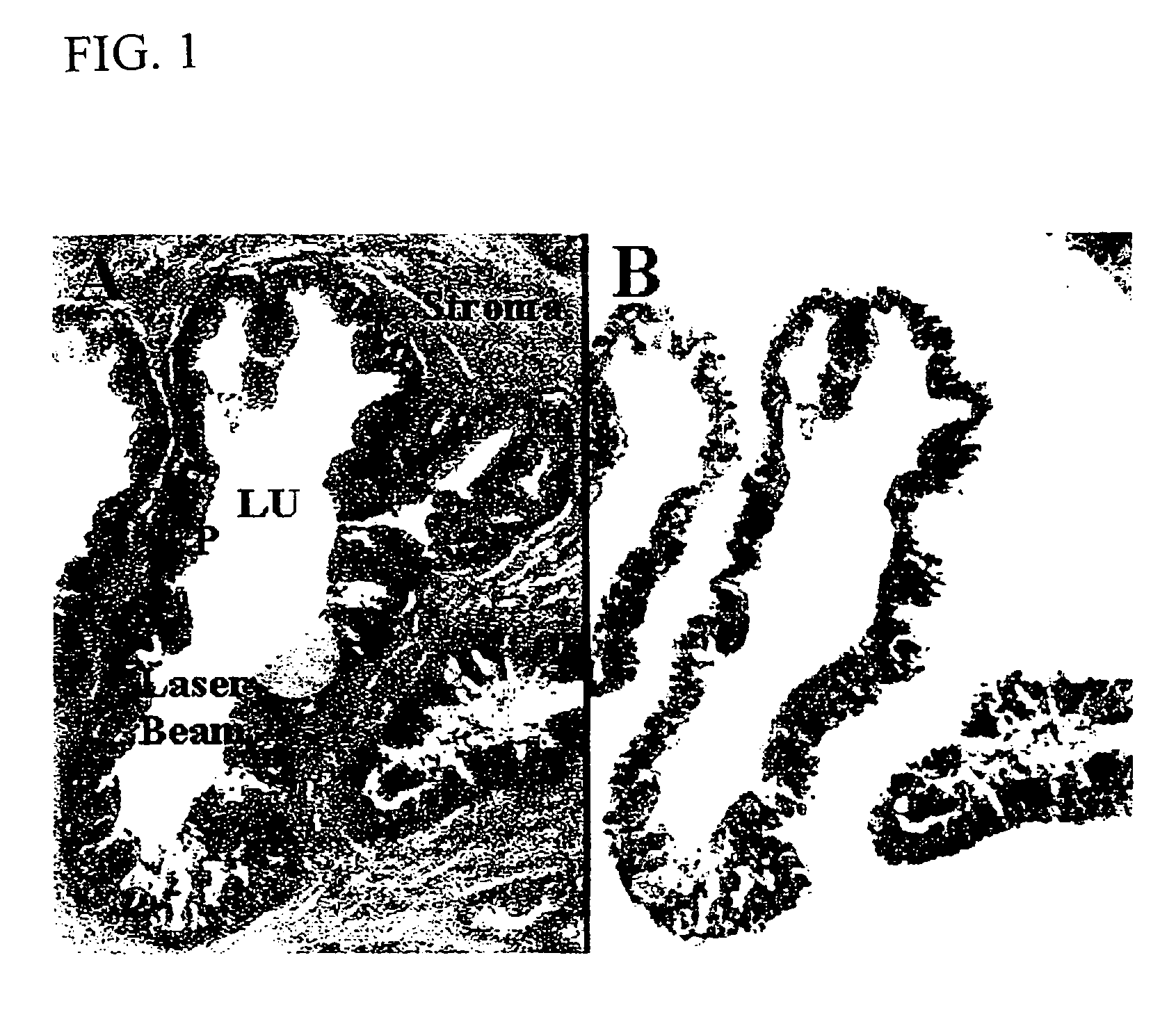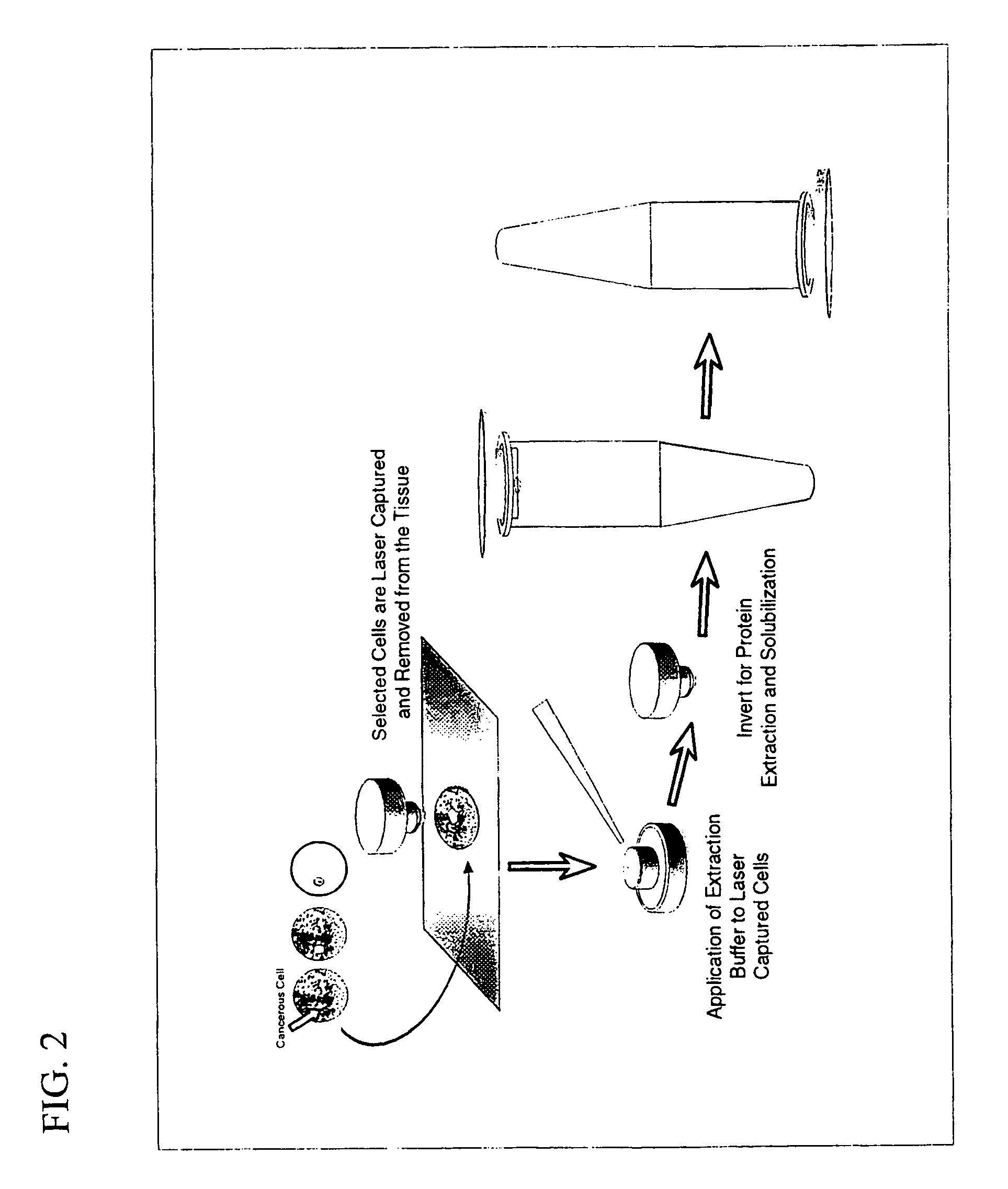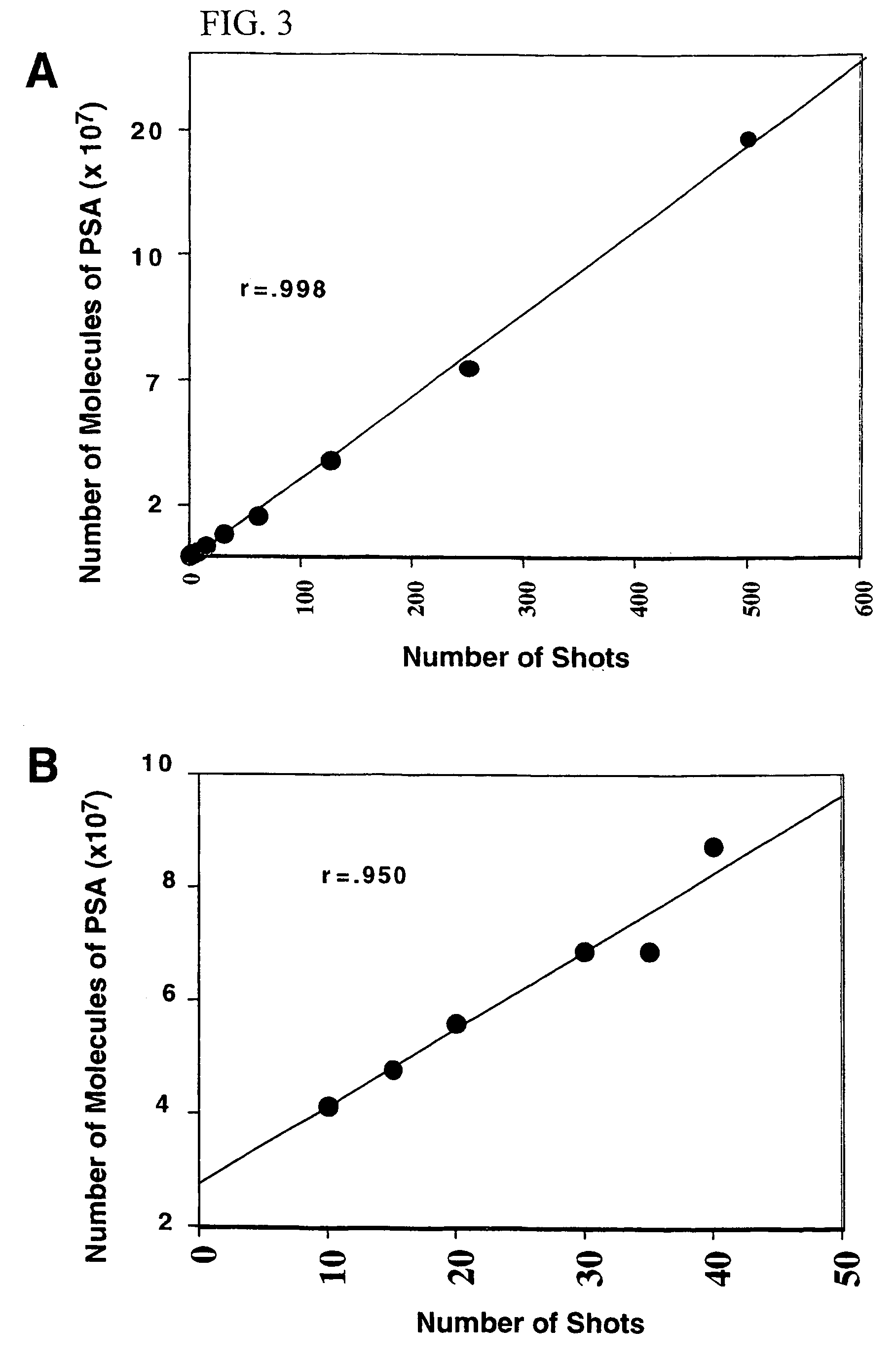Methods for the isolation and analysis of cellular protein content
a cell protein and isolation technology, applied in the field of cell protein isolation and analysis methods and devices, can solve the problems of complex proteomic research, ineffective quantitative data, and inability to provide immunohistochemistry a solution to this problem, and achieve the effect of rapid and reliable identification of source tissu
- Summary
- Abstract
- Description
- Claims
- Application Information
AI Technical Summary
Benefits of technology
Problems solved by technology
Method used
Image
Examples
example 1
Quantification of Intracellular PSA from Benign and Malignant Prostate Epithelium by Immunoassay
Case Materials
[0048]Tissue was obtained following an IRB approved protocol from both the Urologic Oncology Branch in the National Cancer Institute, Bethesda, Md. and the Mayo Clinic in Rochester Minn. After surgery, the tissue samples were snap frozen in liquid nitrogen. The tissue was then embedded in Optical Coherence Tomography (O.C.T.) compound (Tissue Tek, Miles, Elkhart, Ind.) and stored at −80° C. Cases were selected based on the histology present in the tissue sections so that normal glands, Prostate Intraepithelial Neoplasia (PIN), and adjacent carcinoma, could be compared within the same patient. Prostate tissue cases were selected to include ample stroma to serve as a negative control. Lung tissue was used as a second negative control.
Sectioning and Staining
[0049]The O.C.T embedded tissue blocks were cut into 8 μm sections with a cryostat. After cutting, the sections were immed...
example 2
Comparative Protein Analysis of Normal and Cancerous Esophageal Epithelium Patients and Tissue Samples
[0064]The two specimens studied were from patients who presented to the Shanxi cancer Hospital in Taiyuan, Shanxi Province, People's Republic of China and diagnosed with esophageal cancer. Both patients were considered candidates for curative surgical resection. Both cases were stage two squamous cell carcinomas of the esophagus.
[0065]Frozen section slides were prepared from each case and microdissected by LCM (Pixcell 100, Arcturus Engineering, Mountain View, Calif.) by selectively aiming for and capturing normal epithelium or tumor cells. LCM was performed as previously described except AEBSF (Boeringer Manheim) was added to the staining baths at a final concentration of 2 mM to inhibit proteases. In each case 50,000 cells were procured. Based on careful review of the histologic sections each microdissection is estimated to contain >98% of desired cells (normal vers...
example 3
Comparative Protein Analysis of Normal and Cancerous Prostate Epithelium and In Vitro Prostate Cell Lines
Patients and Tissue Samples
[0090]Tissue from prostate cancer patients undergoing radical prostatectomy at the Clinical Center of the National Cancer Institute (Bethesda, Md.) and at the Mayo Clinic (Rochester, Minn.) was used. Tissue from the peripheral zone of the prostate was procured, immediately snap frozen, and stored at −80° C. Matching normal and tumor cell lines were prepared from the prostatectomy specimens obtained at the NCI and immortalized as described by Bright et al., Cancer Res. 57: 995–1002 (1997). LnCaP and PC3 cells were purchased from the American Type Culture Collection (Manassas, Va.). Microdissection was performed and the cells were prepared for 2D-PAGE analysis as described above in Example 2. 2D-PAGE gels were done using alpha-tubulin to normalize the sample load, as described in Example 2. The anti-alpha tubulin antibodies, used at 1:1000, and HRP-couple...
PUM
| Property | Measurement | Unit |
|---|---|---|
| thickness | aaaaa | aaaaa |
| volumes | aaaaa | aaaaa |
| diameter | aaaaa | aaaaa |
Abstract
Description
Claims
Application Information
 Login to View More
Login to View More - R&D
- Intellectual Property
- Life Sciences
- Materials
- Tech Scout
- Unparalleled Data Quality
- Higher Quality Content
- 60% Fewer Hallucinations
Browse by: Latest US Patents, China's latest patents, Technical Efficacy Thesaurus, Application Domain, Technology Topic, Popular Technical Reports.
© 2025 PatSnap. All rights reserved.Legal|Privacy policy|Modern Slavery Act Transparency Statement|Sitemap|About US| Contact US: help@patsnap.com



